Article
A Visit to Raspberry Island Lighthouse
-
A Visit to Raspberry Island Lighthouse
Join Ranger Fred (as Lee Benton), as he gives a tour and shares his experiences as the Head Keeper at Raspberry Lighthouse.
- Date created:
- 08/01/2020
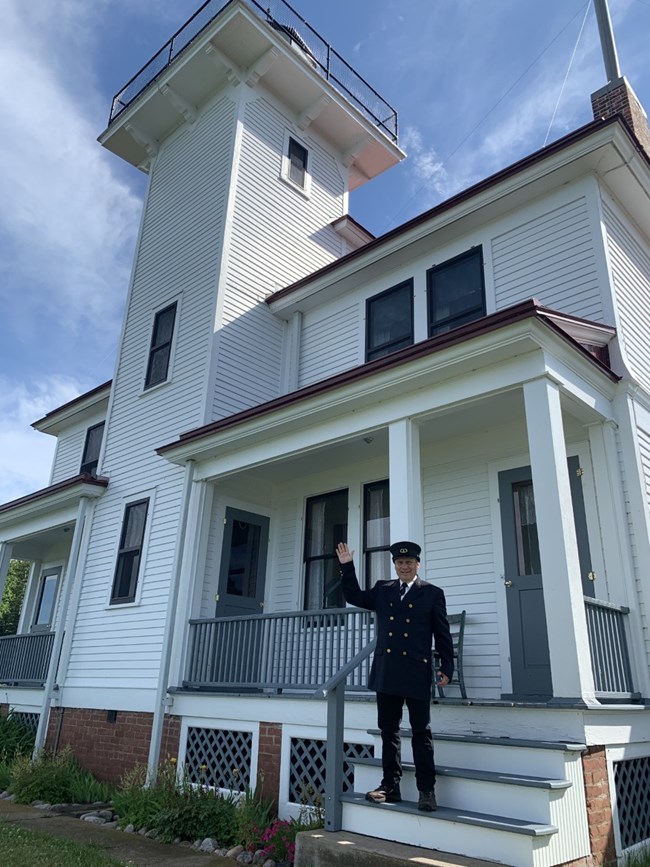
Hello to you. I see you stopped by to learn a little about what it is like to be a lighthouse keeper on an island.
Welcome to Raspberry Island Lighthouse. My name is Lee Benton, and I am the head lighthouse keeper.
My wife, Anna, and I came to this lighthouse in 1914. Let’s see, this is 1920, so I will complete 7 seasons the end of this year. Prior to coming to this lighthouse, I had worked as an assistant keeper for nine years at several different lighthouses on Lake Superior.
Our son Harold was 7 years old when we moved here in 1914. He has grown up here throughout the years and knows every inch of this island.
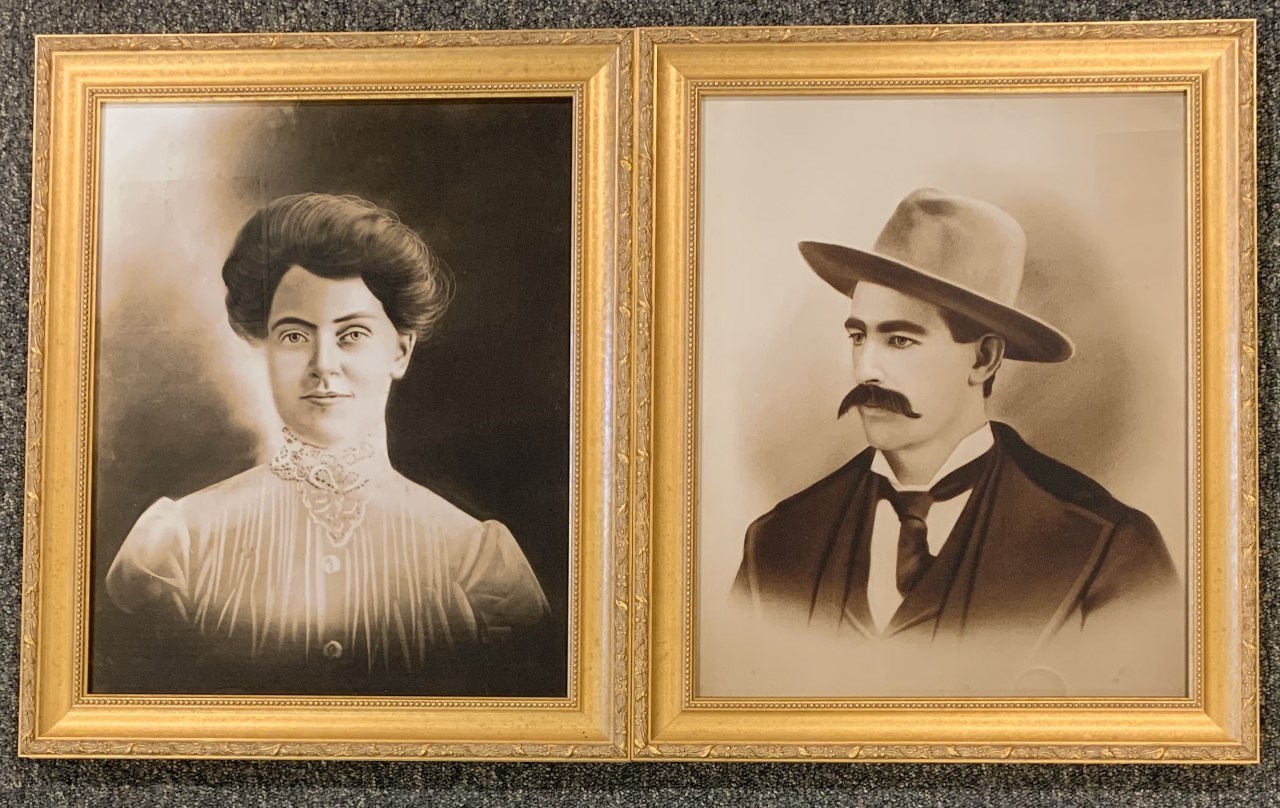
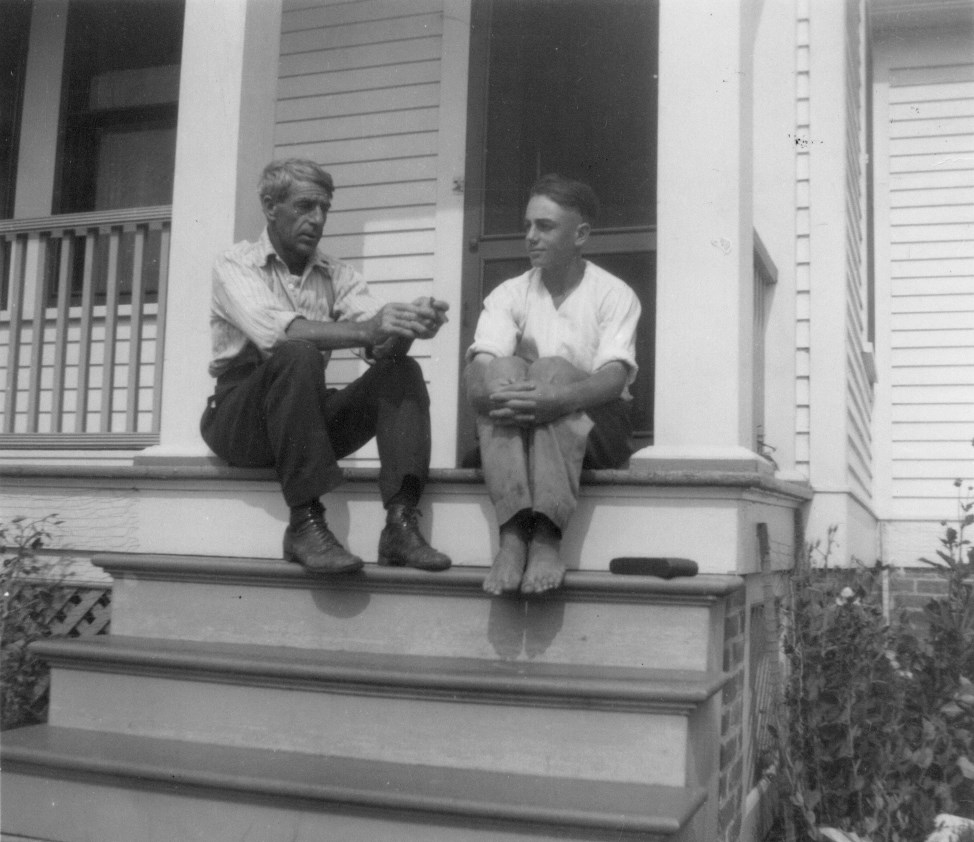
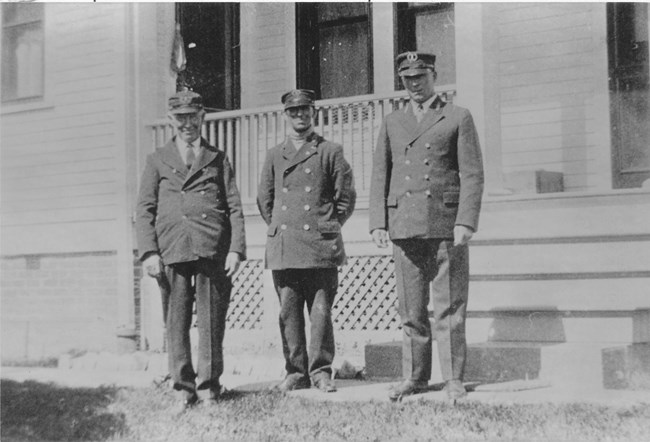
Here at Raspberry I have two assistant keepers, who work with me at this station. While we don’t see each other often, we, the keepers of the six lighthouses in the Apostles, are a close-knit community.
Keeper Marshall from Devils Island always stops to see us on Raspberry while returning to his duty station from a trip to Bayfield for mail and supplies. He even planted a potato garden on Raspberry because of the poor soil on Devils Island.
Just last week, I headed over to see Keeper Emmanual Luick on Sand Island to borrow a tool I needed for a repair on our light timing mechanism.
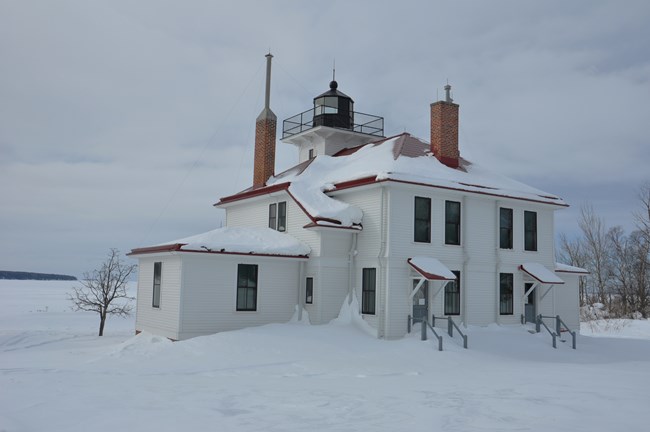
In the winter snow and ice prevent any boat traffic, so we don’t live on Raspberry Island year-round.
We usually come out to the island in April and stay until early December, all depending on the weather.
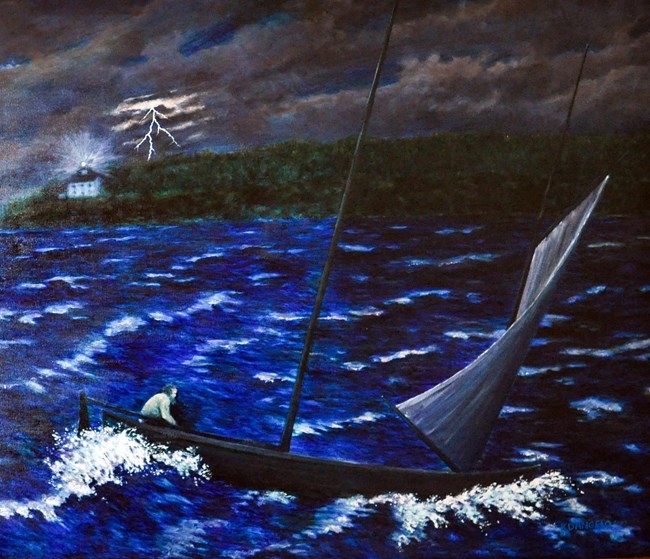
The life of a lighthouse keeper on a remote island in Lake Superior is not easy. The work is hard and the hours are long. The physical isolation is mentally challenging and access to everyday needs and niceties such as medical care, groceries, and mail are not readily available. It certainly has gotten better with time, as we now have a small motorboat here.
Back when keeper Francis Jacker was here in the 1890s, he had no assistant keeper and only a small sailboat that could periodically get you to the mainland.
One time, he ended up stranded on one of our neighboring islands for three days after his sailboat was torn apart in a storm. He was lucky to survive the ordeal.
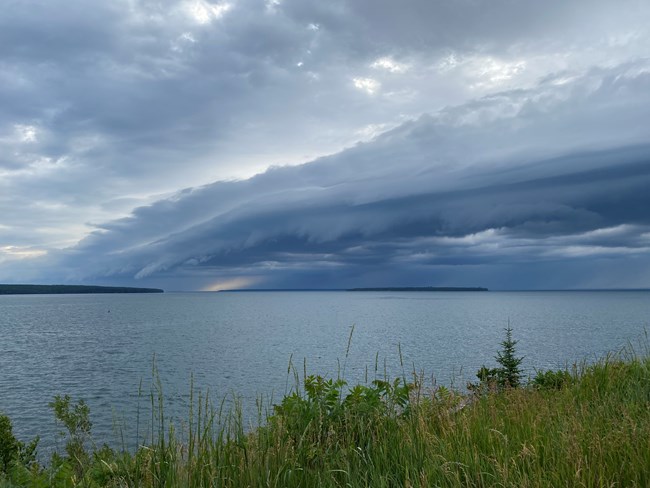
NPS Photo/ M. Carlson
I’ve had some close calls traveling in a boat during a storm, but never a disaster like one of the early keepers, Patrick Mulcahy. Keeper Mulachy got caught in a storm in July of 1868. Unfortunately, Mulcahy lost his life on that stormy day. When out in heavy wind and waves, my mind often thinks about Mulcahy and how easy it would be to have my boat capsize with no help in sight.
Even with its challenges, I enjoy being a lightkeeper at Raspberry, and so does my family. My son Harold recently told me,
“Dad, I love living at Raspberry because I get to go fishing every day."
-Harold Benton
But island life is not for everyone. Keeper Alex McLean’s wife, Cecilia, recently told a newspaper reporter,
“I hate lighthouses. They are so lonely. Going from one island to another, out in the Apostles group, isn’t much fun, especially when you have to go in a small boat and maybe get caught in a storm. We left Raspberry Island in 1916, and I was glad enough to see the last of it.” - Cecilia McLean
Life on the islands is not for everyone, but I think most of us do like this work, and enjoy the island life.
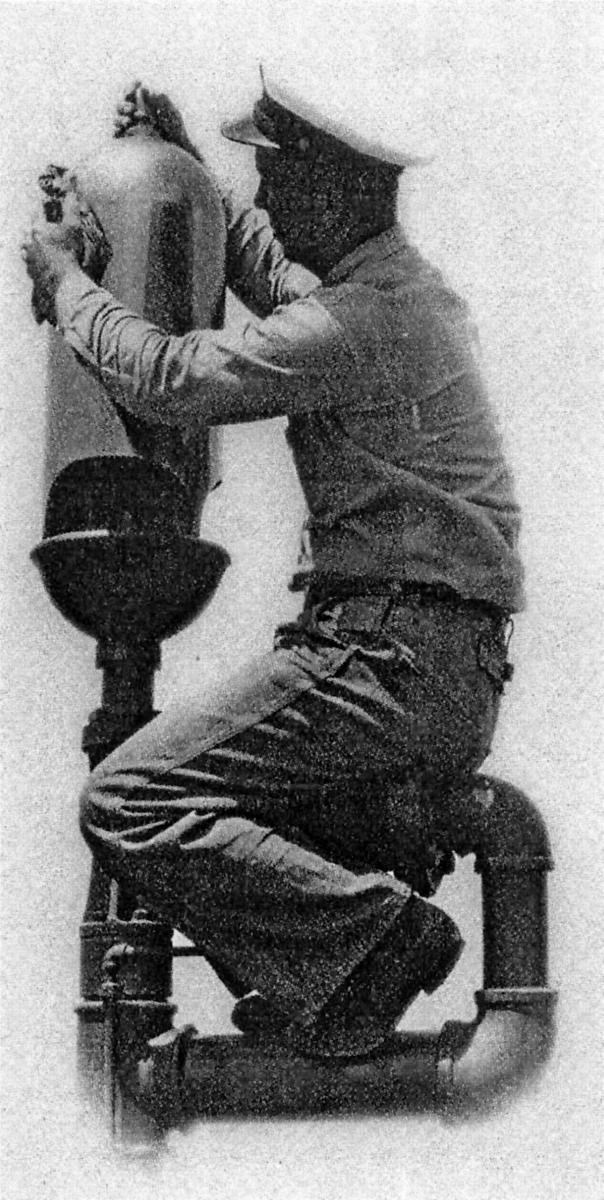
Speaking of work, let me tell you about the work we do here. Some people think all keepers have to do is stand watch at night at the top of the tower watching the light. As much as I don’t mind standing watch during a crisp fall night watching a clear sky full of stars, there is so much more to our jobs. My contract with the Bureau of Lighthouses calls for me to work 15 hours per day…that’s 105 hours per week!
Personally, I enjoy tinkering with the precision timing mechanisms on the light and fog signal. What I don’t like is shoveling coal and keeping banked fires in the fog signal. Oh, I forgot you aren’t a keeper. “Banking a fire” means making a small fire in the corner of the firebox of the steam engine. This allows the water to heat, and we can quickly put more coal into the firebox to make water boil faster, which creates the steam used to sound the fog whistles.
Last month my assistant keeper, Toots Winfield, while on duty alone around midnight, came pounding on our doors and got us all up. An unexpected fog was rolling in. We had to move quickly to get a fire going to sound the fog whistles. We sounded the whistles in the nick of time as a ship passing at 1:00 am could not see the light as it approached the entrance to the west channel. Luckily, all was safe that time.
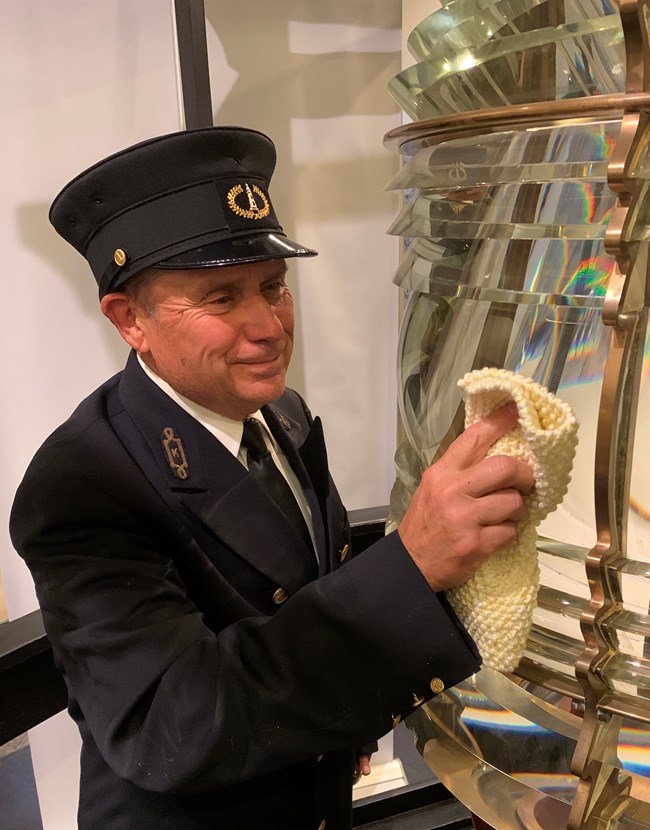
NPS Photo/ J. Olson
I hate to admit it, but much of our work revolves around cleaning and maintenance. We are always cleaning the Fresnel lens, the glass flu, polishing the brass, and one of the jobs I dread…the nighttime ritual of cleaning bugs off the glass of the lantern room windows. I’m sure you can imagine, on a summer night, swarms of bugs are drawn to the bright light in the tower. Keeping the glass windows clean and free from bugs ensures a strong beacon that ships depend on.
We also have lots of maintenance on buildings, including the perpetual scraping and painting of surfaces inside and outside of the lighthouse. Another job I don’t like is the cleaning of our house cisterns, which is the source of our drinking water. We have to drain the cisterns and then scrub the walls clean before they are refilled by summer rains.
Overall it is great work, and I think my two assistants also enjoy it. But enough about that, let’s tell you more about the lighthouse and give you a tour of our home.


Left image
Raspberry Lighthouse 1863 - 1906
Right image
Raspberry Lighthouse 1906 - Present
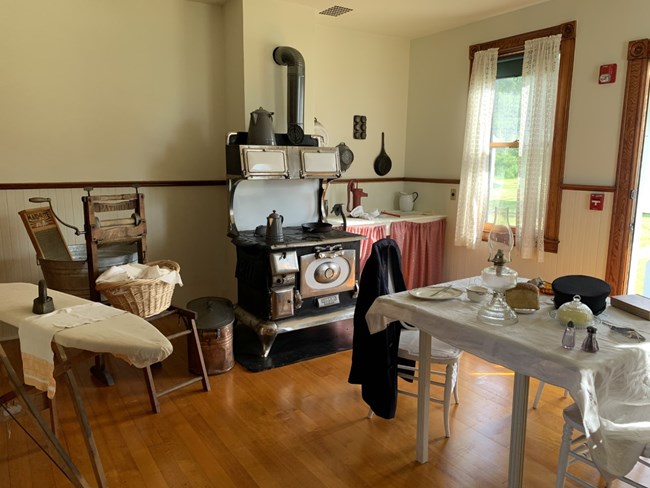
Anna and I try to keep a neat and clean house, so we can welcome visitors into our home. Besides, when the Lighthouse Bureau inspectors visit, I want our station to receive a top award.
Last year we almost got caught not ready for the inspector. We had a late dinner with the assistants and didn’t clean up that night. Early the next morning at 6:00am my assistant, Tom Hassing, was on duty in the tower and he spotted the Lighthouse Tender boat, Marigold in the West Channel near Oak Island. Tom woke us up and got us all moving quickly. I headed down to the dock to meet the Marigold while Anna and the rest of the families ran around getting everything in order for the inspector.
We made it, and got a top rating; but only by the skin of our teeth.
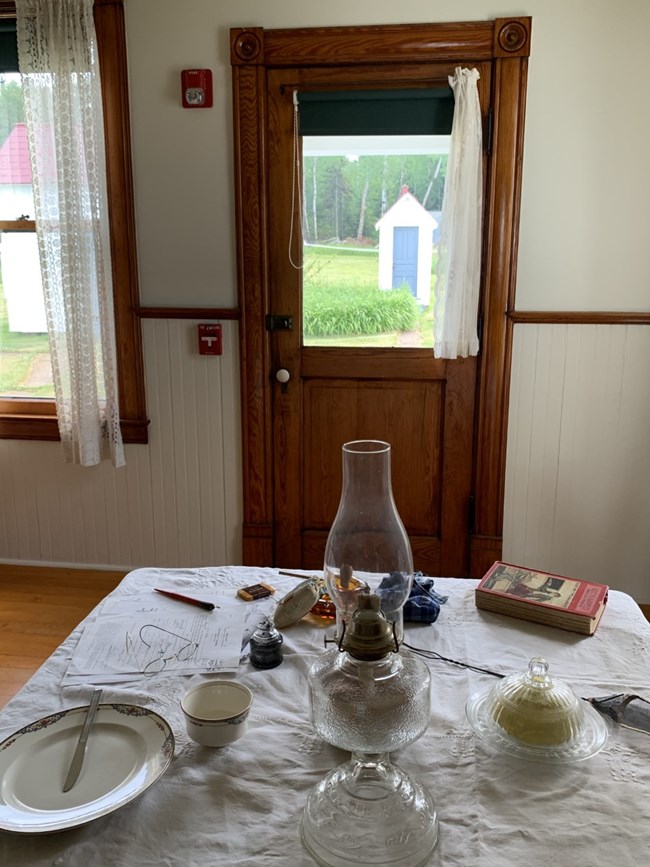
NPS Photo/ S. Palmer
We have no electricity or indoor plumbing here, so you can see outside the window is the privy just a few steps away.
I think Harold’s least favorite job is keeping the privy clean. But, everyone has to do their part. He can’t just fish the days away.
Our dining room is very nice, though it has to serve multiple purposes. In addition to being a dining room, it is Anna’s sewing area and also my office. The Lighthouse Bureau requires me to do a lot of paperwork including writing every day in the logbook, detailing what we did that day.

NPS Photo/ N. Howk
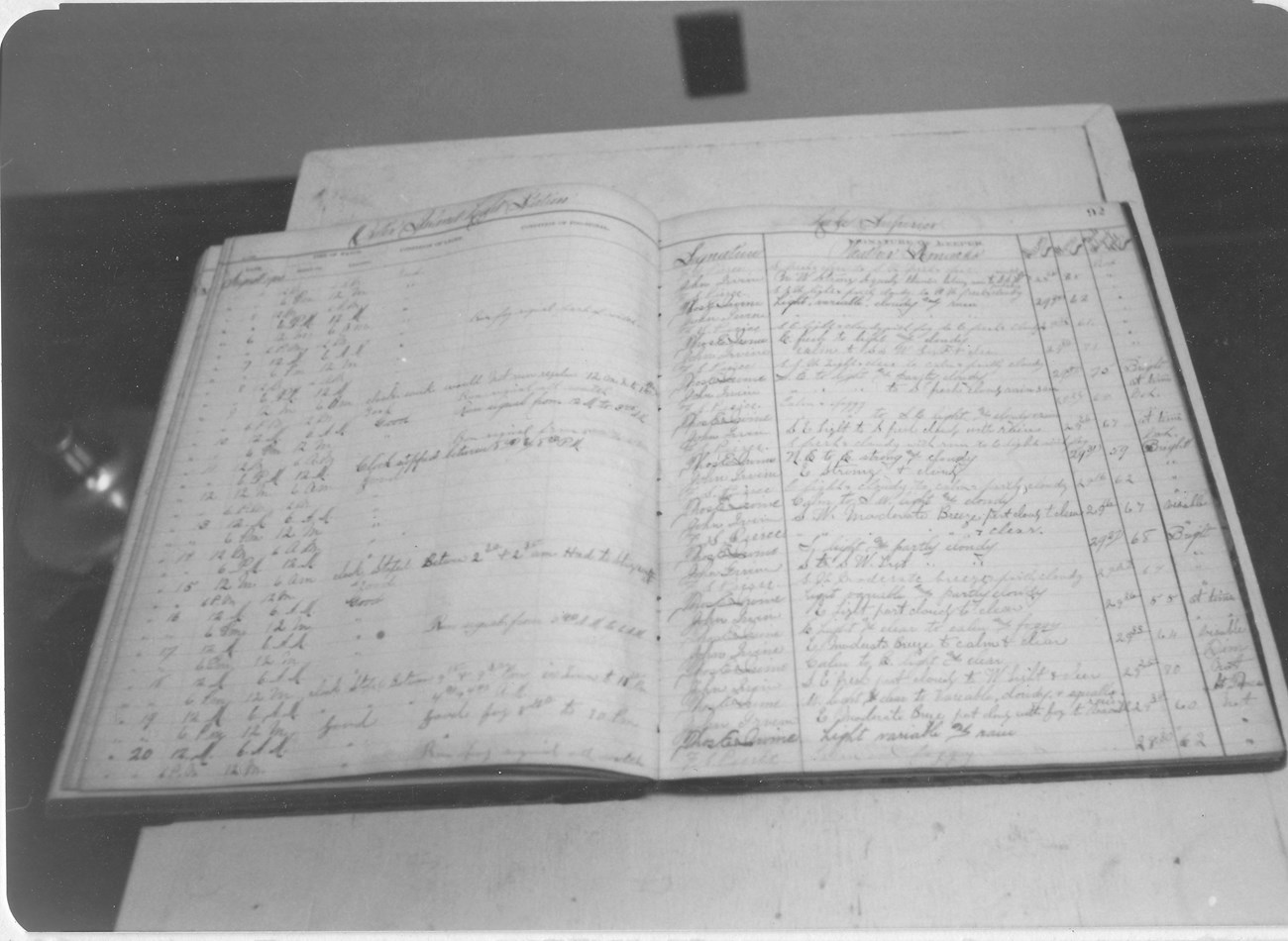
NPS Photo
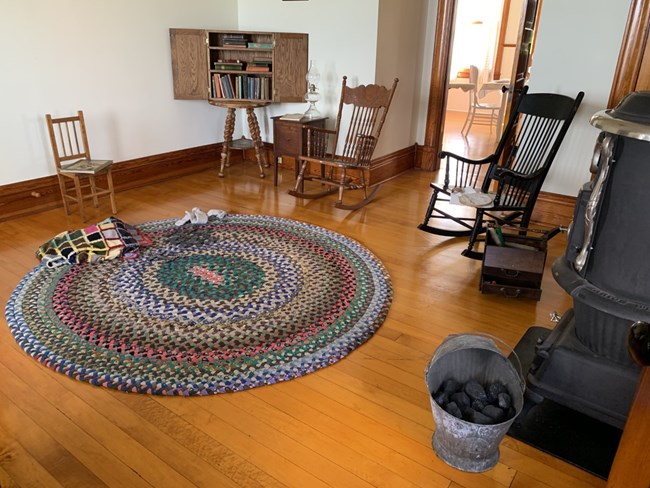
NPS Photo/ S. Palmer
We have a very nice parlor and I even bring out my Ambrola every spring. We often gather with the other families to listen to music.
Let me play a little for you, and then we can head upstairs to see the three bedrooms.
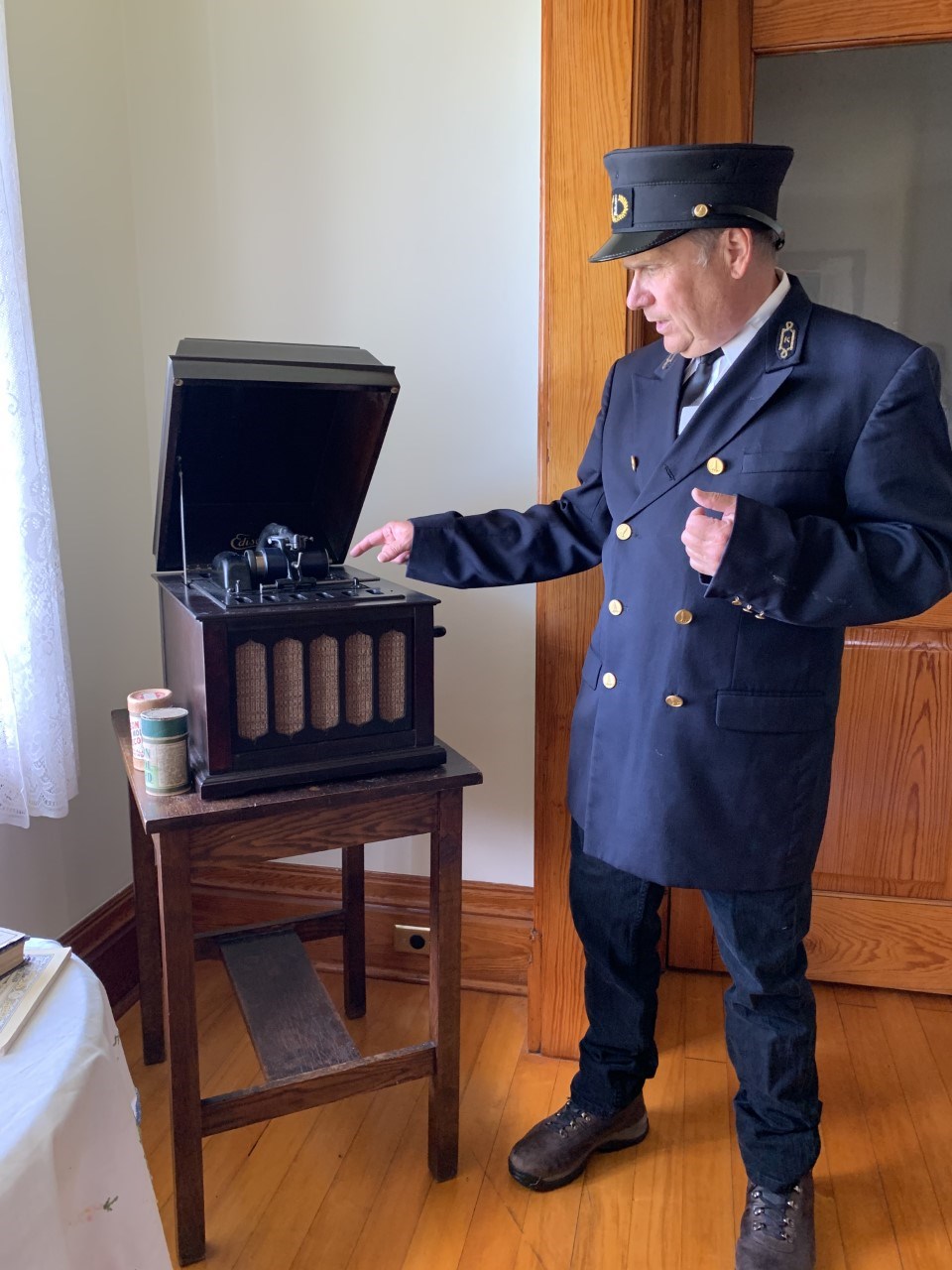
NPS Photo/ S. Palmer

NPS Photo
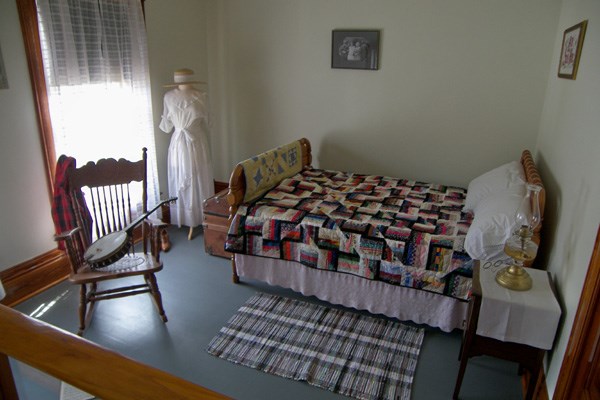
NPS Photo/ N. Howk
I have a door from my bedroom that goes up to the top of tower where we’ll find the light. That light has to be lit one half hour before sunset until one half hour after sunrise.
My two assistants and I take 4-hour shifts manning the light at the top. But on nights of heavy wind, rain or fog, all three of us are up all night manning the light and fog signal.
A few years ago, on a particularly rough night we had an incident when a fully loaded ore boat got way to close to Raspberry Island and was grounded on a shoal just off the lighthouse. No other ship was near, so I rowed out and talked to the captain about a plan to free his boat. We decided to have the crew throw iron ore overboard until they got the ship light enough to get off that shoal. I didn’t say anything at the time, but I think that ship was overloaded for its capacity. We now mark that spot with a buoy so other ships don’t hit that shoal.
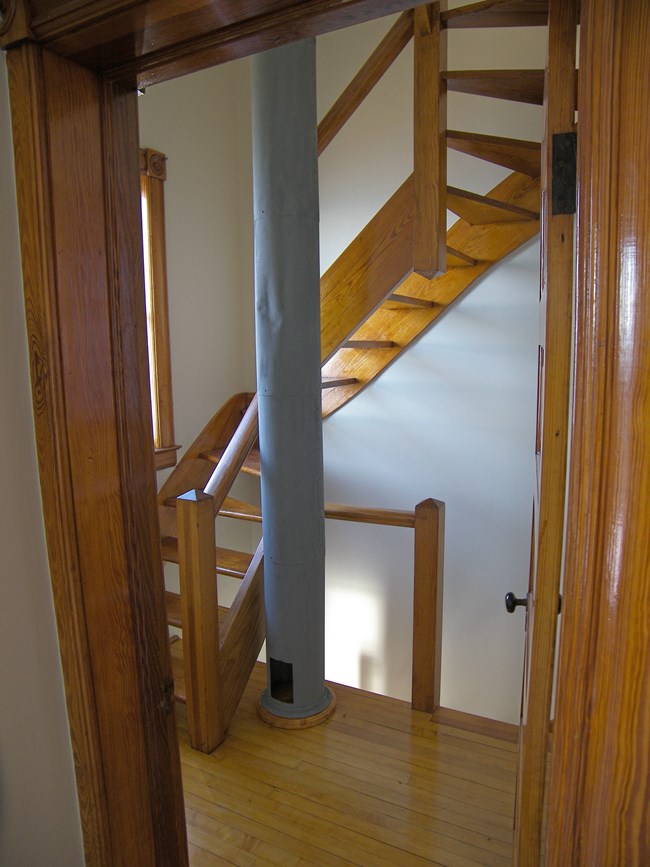
NPS Photo
As we head up the unusual wooden winding steps to the top of the tower, notice the grey tube all the way to the top. Inside the tube are weights and chains used for the revolving mechanism on the light. It operates kind of like a grandfather clock.
Each night we pull the chain and the weight rises to the top of the tower just underneath the light. The pressure of the weight causes the light to rotate with the precision of a clock. The rotation causes the light to be seen as a flash. Our light flashes once every 60 seconds.
Each light has a different flashing sequence so ships know which lighthouse they are passing.
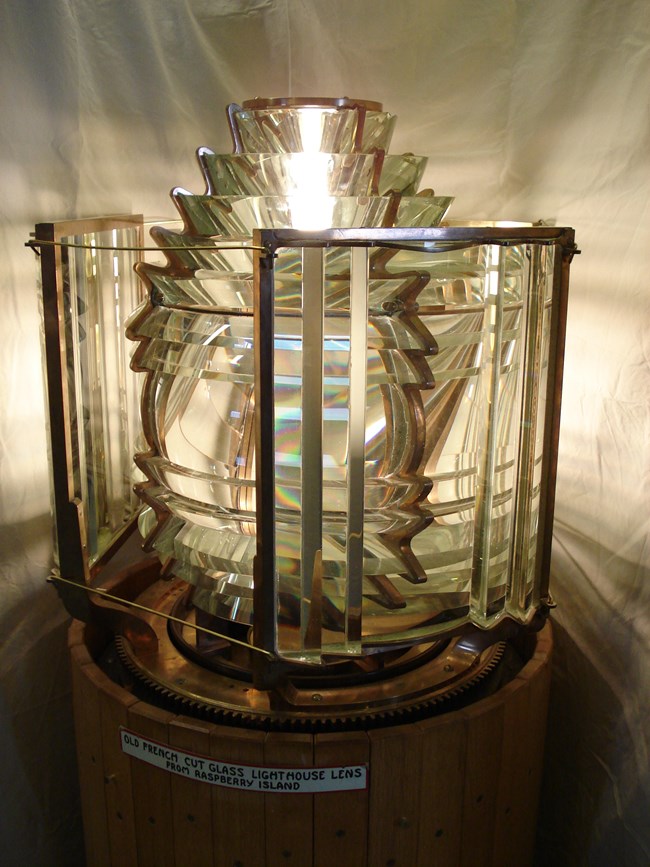
Here we are at the top.
Our light was manufactured in France, shipped to the United States, and installed here in July of 1863. It is a beautiful 5th order Fresnel Lens containing many glass prisms that refract the light produced from our kerosene lamp inside the light.
Under ideal conditions, our light can be seen 17 miles away.
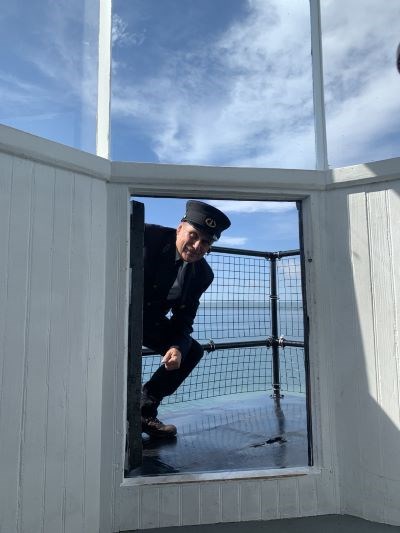
NPS Photo/ S. Palmer
If you look west you can see York, Sand, and Eagle Islands. On a clear day the Minnesota North Shore is visible in the distance.
Looking east you see the mainland and then the West Channel and Oak Island.
In the distance you see part of Madeline Island, and on a real clear day you can see the hills and mountains of Northern Michigan above Madeline Island.
Using your finger or cursor, move the picture below to see a panoramic view from the top of the lighthouse tower.
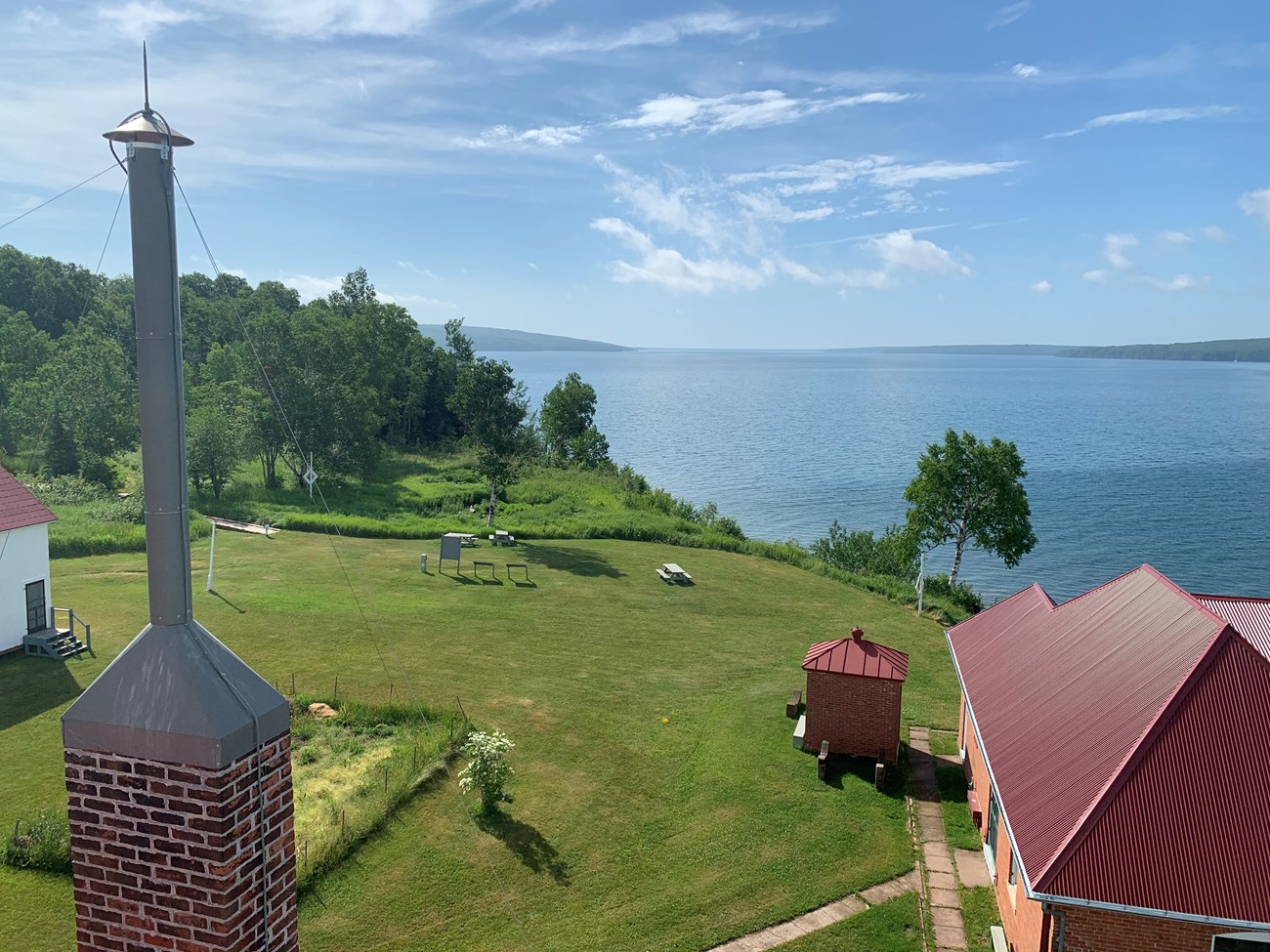
NPS Photo/ S. Palmer
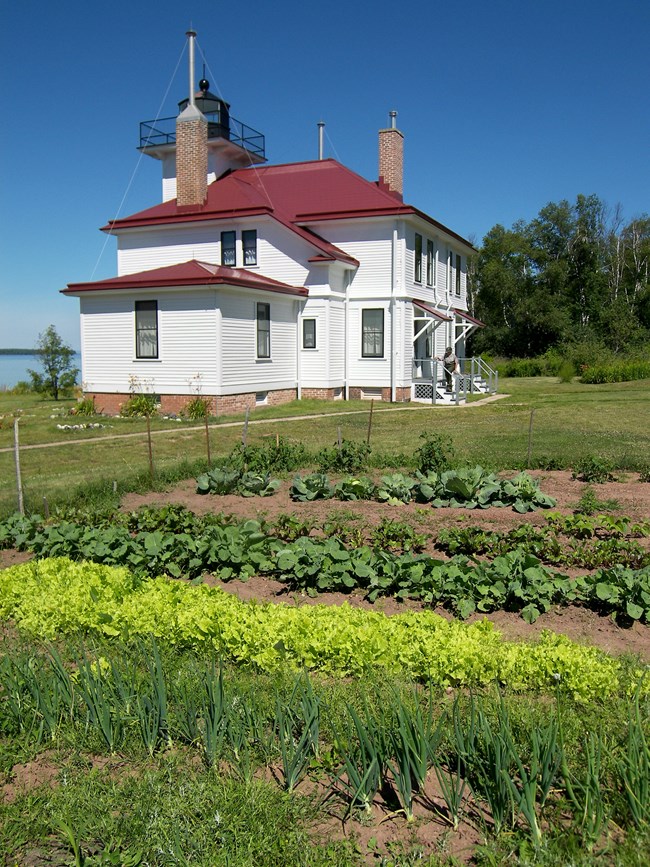
Looking around the grounds of the lighthouse you can see the fog signal building, and our vegetable garden with the barn and summer kitchen.
We grow a lot of vegetables here and keep chickens in the barn.
We have to be self-sufficient.
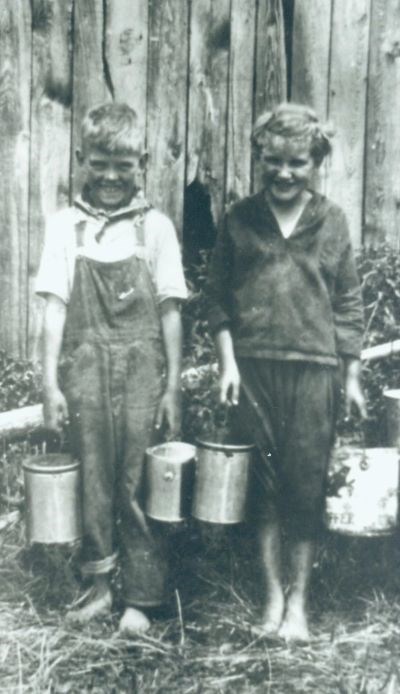
Each summer we love to harvest wild berries. Last week, my son Harold and the two Hassing children went to Devils Island and picked blueberries. Anna and I put up 26 quarts of berries.
Quite a haul!
They will sure taste good on a November morning over my oatmeal.
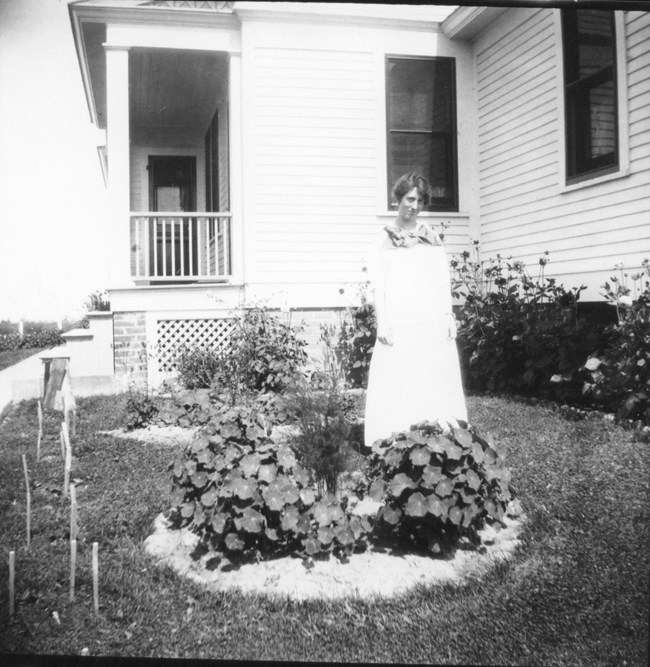
I hope you noticed the beautiful flower gardens around the outside of the house. My wife Anna has a green thumb and loves to plant all sorts of flowers each year.
In fact, I hate to admit it, but Anna has this little competition with Michigan Lighthouse keeper Ed Lane’s wife, Elizabeth, to see who has the most beautiful flowers.
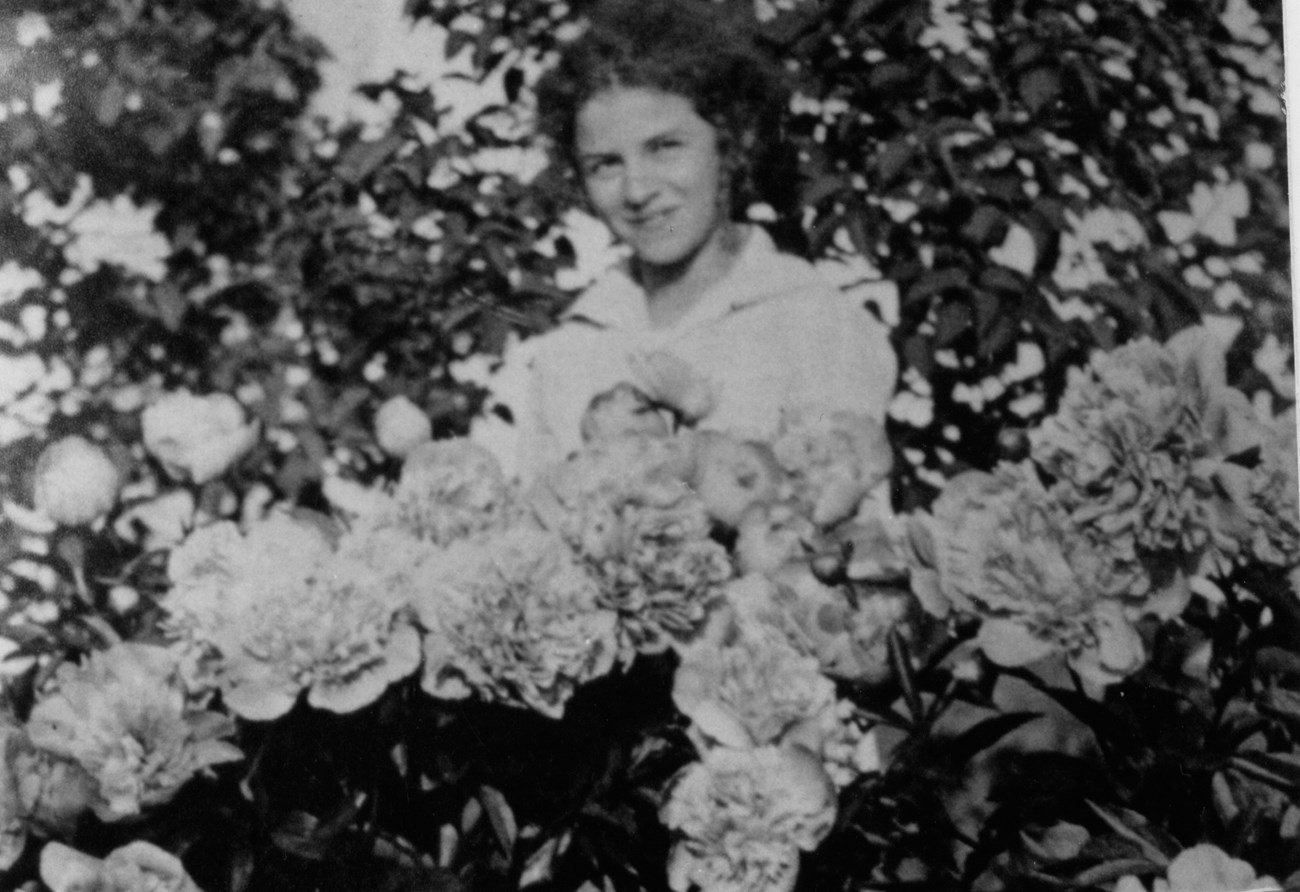
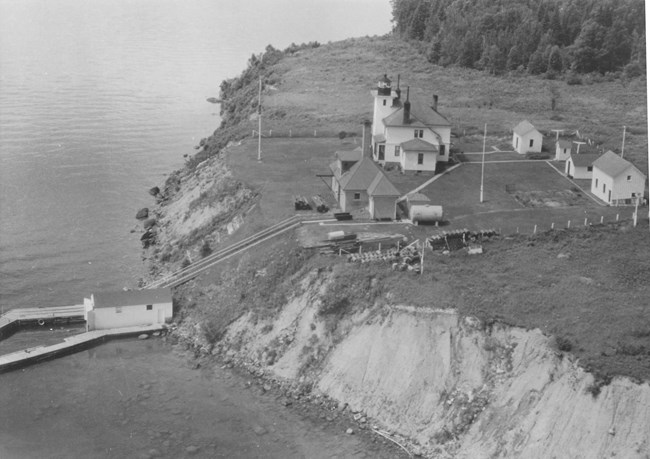
In these modern years of the 1920s, we do have a motorboat at our station. We keep it in the boathouse down by the dock.
Each week one or two of us motors to Bayfield to pick up the mail and supplies. But in the early years, keepers rarely left the island.
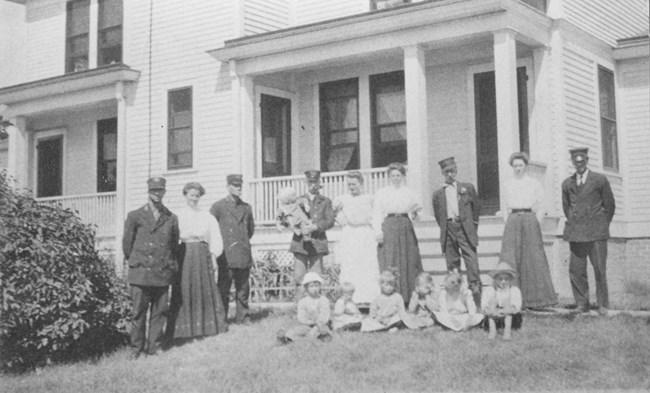
While a keeper’s life might seem like a lonely existence, I see it differently. We keepers of the six light stations on the Apostles and our families are a community. When we do get together we share the stories of our work and our lives. It isn’t always an easy life, but our common, unique bond is living on an island and ensuring the safety of ships passing through these Apostle Islands.
You're welcome to spend some time, taking in the island life on your own.
You can take a walk on one of the wooded trails, or enjoy a game of croquet!
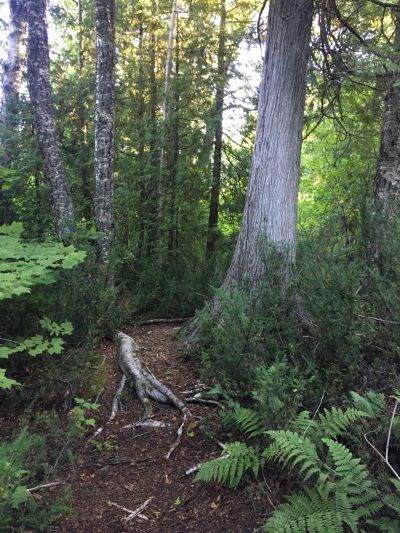
NPS Photo/ F. Schlichting
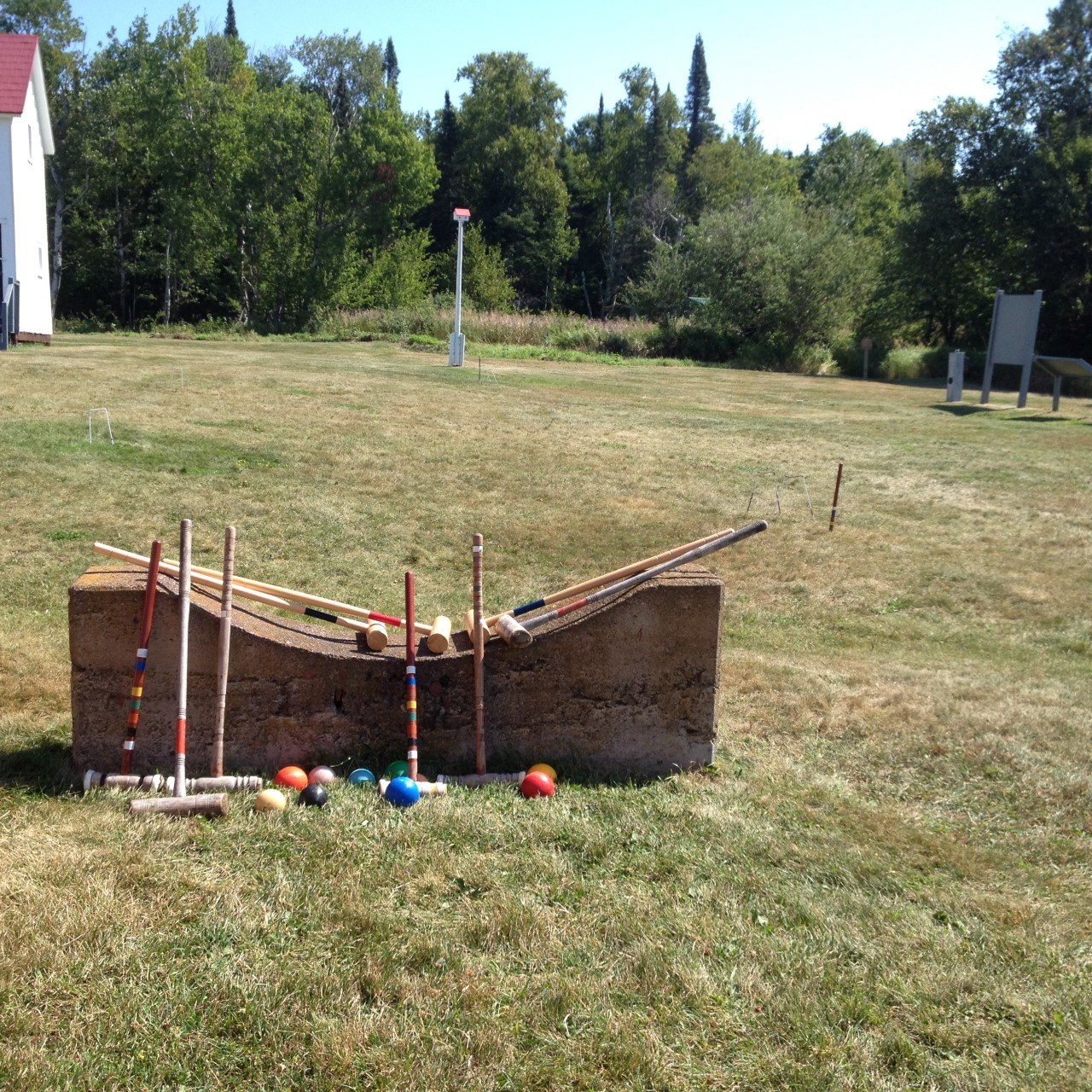
NPS Photo

to visit the Raspberry Island Lighthouse. Come back again soon.
NPS Photo/ S. Palmer
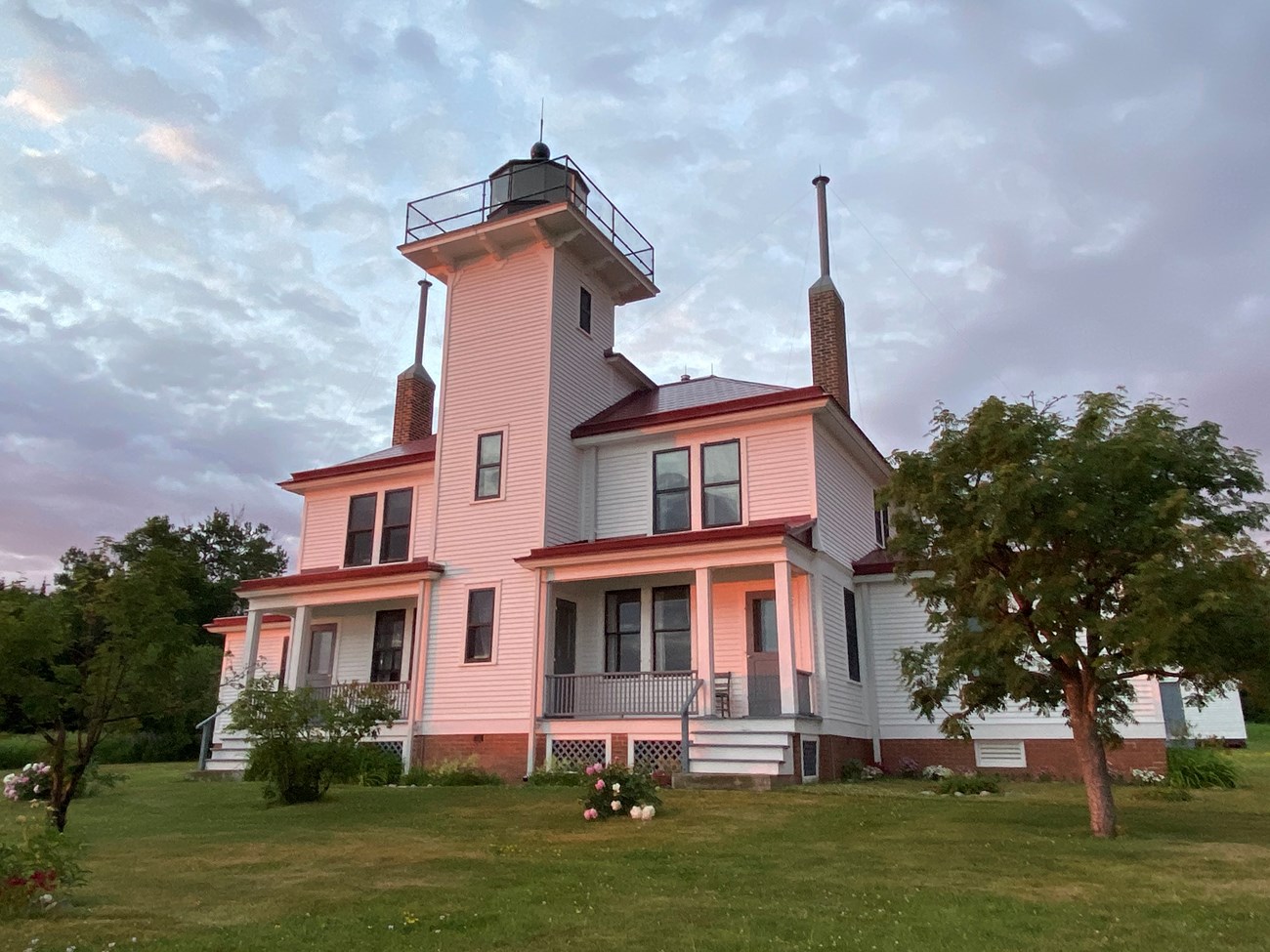
NPS Photo/ M. Carlson
Last updated: July 7, 2025
